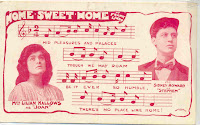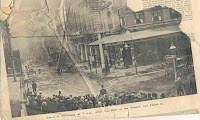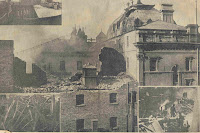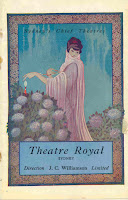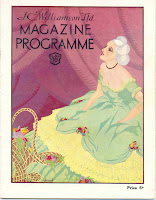This is a sad story.
Jack Cannot was a very famous comedian in the 1920s, but the talkies and the depression came and life was difficult for Jack and his family.

This is his last letter.
Dear Old Charlie,
When you get this it will be a case of "Alas, poor Yorrick", and I want you to do the best for my family, who will be more or less destitute. I have fought against doing what I intend to do, but it is the only way I can see clear to enable my children to get a proper education and my darling wife to feel that every postman's knock does not mean a summons.
Charles, I have the greatest wife and children a man could wish for, so you can guess with what heart yearnings I am leaving all I love best, but I cannot get decent work. I have done 26 weeks work in two years and then I got scaled for 70 pounds in a pantomime.
Now old sport, you and Walter- God bless you both- will do what you can for my loved ones , especially the boy. Oh, what a grand little fellow and how I worship the very ground he walks on. He has been at college since he was nine years old, and he is 14 and two months now, and I am behind on his schooling fees.
If you get his letter before they find me, I would like a decent burial. We owe at least 15 weeks rent, but here again we have a wonderful woman for a landlady. If it hadn't been for her we would have been destitute long ago.
My daughter, Betty is just a sweet angel and I owe her school fees too. I have earned 66 pounds since "Clowns in Clover" finished and I am doing this really to get out of the way, as I havent any money to go abroad or anything. I was going to start a school for singing with the aid of a friend, but I feel it's no go before we open. So that's that. So long old pal. If I have helped make things easier for the profession, then I am glad, though I believe I have suffered in consequence.
God Bless you all
Jack Cannot.
In August 1929, Jack's body was found near Malabar in Sydney. His death was ruled a suicide.
More on
Jack's Story
 Her family were quite religious and so was Minnie, she once said she was "half a nun" She particularly disliked the way men looked at her, and how many people equated "actress" with bad moralily.
Her family were quite religious and so was Minnie, she once said she was "half a nun" She particularly disliked the way men looked at her, and how many people equated "actress" with bad moralily.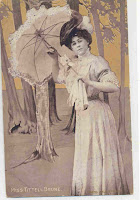 She played male and female roles and her most famous character was "Sunday" in the Western themed play of the same name.
She played male and female roles and her most famous character was "Sunday" in the Western themed play of the same name. She died in Los Angeles in 1974 aged 99 years .
She died in Los Angeles in 1974 aged 99 years .



